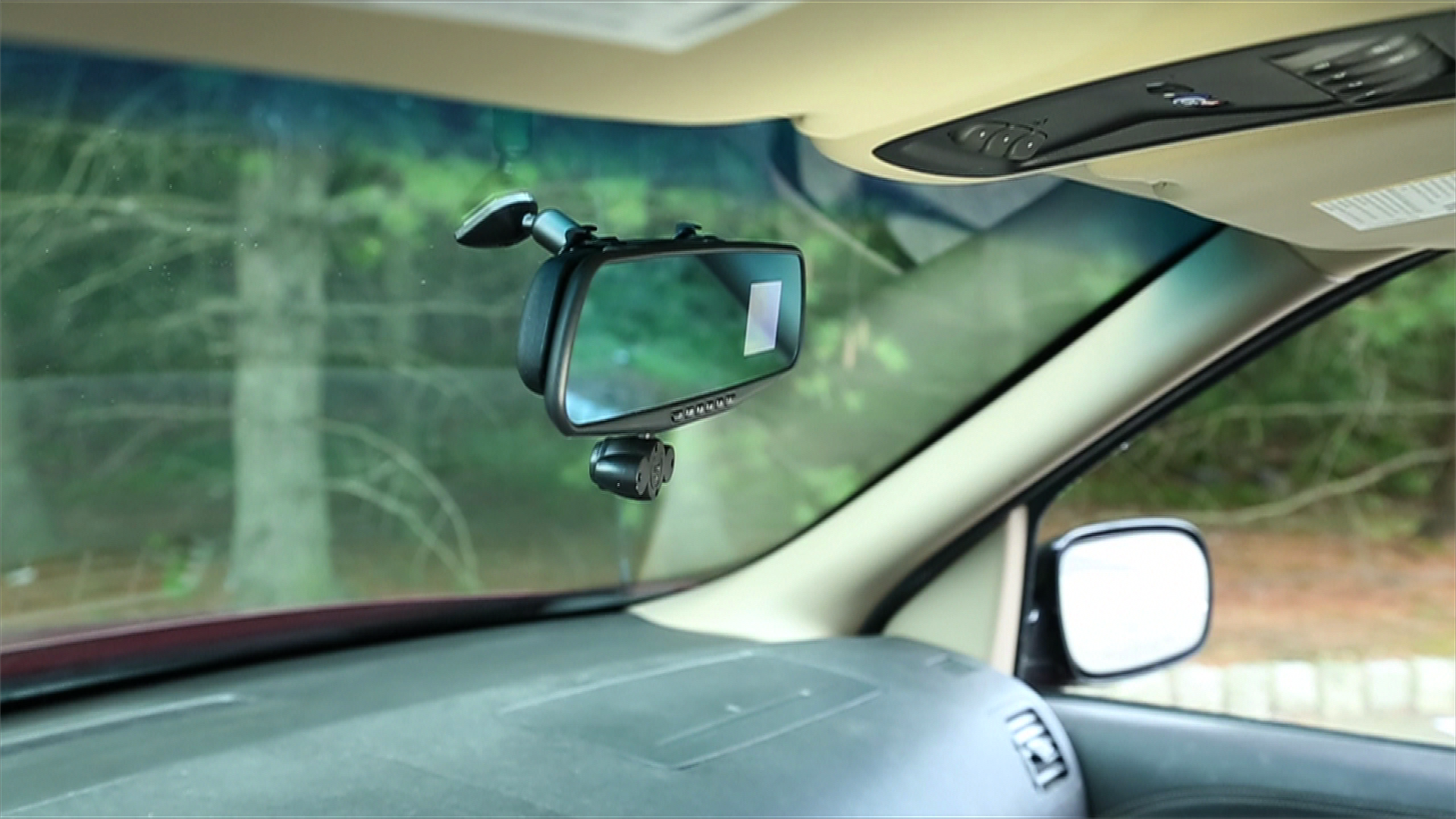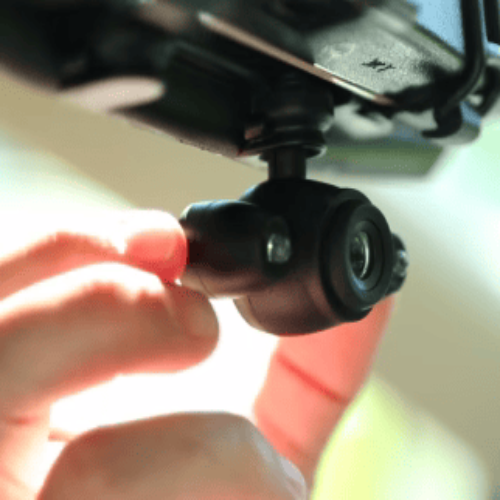Installing a space-saving car mirror cam can elevate your driving experience by offering enhanced visibility, added security, and a sleek, compact design. The rear view mirror dash cam seamlessly integrates with your car’s existing rearview mirror, eliminating the need for bulky external devices. This guide will walk you through the steps to install a space-saving car mirror cam quickly and easily, ensuring a smooth process that doesn’t take up your valuable time.
Why Choose a Space-Saving Car Mirror Cam?
A space-saving car mirror cam offers many advantages over traditional dash cams. Not only does it provide a clutter-free look, but it also ensures that your car’s interior remains neat and organized. The rear view mirror dash cam is discreet and integrates perfectly with the existing mirror, saving space while providing all the functions you expect from a regular car dash cam. Whether you're looking for a better view of the road or enhanced security, this compact solution is perfect.
Preparation Before Installation
Before you begin installing your space-saving car mirror cam, it's important to gather all necessary tools. Ensure you have the car mirror cam kit, the appropriate mounting hardware, and the necessary cables. It’s also a good idea to have a clean cloth and basic tools like a screwdriver handy to complete the installation. Taking a few minutes to prepare ensures that the process goes smoothly, with no interruptions or surprises.
Turn Off Your Car’s Engine
Always start any installation process by turning off your car’s engine and removing the key from the ignition. This ensures your safety while handling the electrical components of the vehicle. You’ll be connecting wires to the power supply, and turning off the car reduces any risk of accidental shorts or electric shocks during the process.
Remove the Existing Rearview Mirror
The next step in installing a space-saving car mirror cam is to remove the existing rearview mirror. This can usually be done by loosening the screws that hold the mirror in place. Make sure to take your time when detaching the mirror to avoid damaging any wiring, especially if your current mirror has built-in sensors or cameras. Keep the screws in a safe place, as you may need them later.
Mount the Car Mirror Cam
Once the old rearview mirror is removed, it’s time to mount your new car mirror cam. The device typically attaches to the existing mounting bracket of your old mirror. Slide the mount of the space-saving mirror cam over the bracket, ensuring it’s secure. Tighten any screws to make sure it’s stable and doesn’t move while driving. The goal is to keep the installation neat and unobtrusive.
Connect the Wiring
Next, you’ll need to connect the power cables. Most rear view mirror dash cams come with an adapter that plugs into your car’s power supply. Carefully run the wiring along the edge of the windshield or through the interior panels to ensure the cables are hidden and do not obstruct your view. Use zip ties or clips to keep the wires organized and secure. Proper cable management ensures a clean, professional finish.

Attach the Camera’s Power Source
Your space-saving car mirror cam will likely require power from your vehicle's 12V system. Connect the power cable to the camera and the vehicle's power port. Ensure the connection is secure, and check that the cam powers up when you turn the ignition on. Some rear view mirror dash cams can be connected directly to your car’s fuse box for a more permanent solution. Follow the manufacturer's instructions for this step.
Position the Mirror Cam for Optimal View
Once your car mirror cam is securely installed and powered on, adjust it for the best possible view. Make sure the camera’s lens is positioned to provide a clear rearview, and adjust the mirror's angle for maximum visibility while driving. Take your time to fine-tune the positioning to ensure you have the best field of view for both safety and convenience.
Test the System
Before you finish the installation process, it’s important to test the system. Turn on your car and check that the car mirror cam is operating correctly. Make sure the screen displays a clear, high-definition view of what’s behind you, and test the camera’s recording features. Also, verify that the audio and other features, such as parking assist or collision warnings, are functioning properly.
Secure All Cables
Now that everything is working, make sure to securely fasten all cables and wires. Use cable ties to bundle any loose wires together, and hide them in the panels or under the trim for a neat, professional finish. This step is crucial to avoid any distractions while driving, and it will help prevent the cables from interfering with your view or becoming damaged over time.
Recheck Mirror Adjustment
After securing everything, double-check your rearview mirror cam’s alignment. Ensure that the mirror itself is positioned correctly so that it doesn’t obstruct your view. A properly adjusted car mirror cam can enhance your driving safety, offering an extra set of eyes on the road without sacrificing comfort.
Mount Additional Sensors (If Applicable)
Some space-saving car mirror cams come with additional sensors such as motion detection or collision warning systems. If your model includes these features, you may need to install the corresponding sensors on your car. These sensors should be placed in strategic locations, such as near the bumper or in the front grille, to provide maximum functionality.
Calibrate the Camera
Once everything is set up, it’s time to calibrate the rear view mirror dash cam. Many mirror cams offer calibration settings through their software or app. This may include adjusting the focus, setting up motion detection zones, or choosing the resolution for recording. Take a few minutes to calibrate the camera so that it’s tailored to your driving environment.
Enjoy Your New Rear View Mirror Dash Cam
With the installation complete, it's time to enjoy the benefits of your new space-saving car mirror cam. Whether you're driving on busy streets or taking a long road trip, the rear view mirror dash cam will provide enhanced security, recording every moment on the road. You’ll appreciate the convenience of having a built-in camera without the bulk of a traditional dash cam.
How Long Does It Take to Install a Space-Saving Car Mirror Cam?
Installing a space-saving car mirror cam typically takes between 30 minutes to an hour, depending on your experience with car installations. For those unfamiliar with wiring or installation, it may take a little longer to ensure everything is set up properly.
Do I Need Any Special Tools to Install a Rear View Mirror Dash Cam?
Most installations don’t require specialized tools. Common tools include screwdrivers, zip ties, and a cloth to clean the area. The installation kit that comes with your car mirror cam usually includes everything you need to mount and connect the device.
Can I Install a Car Mirror Cam Myself?
Yes, installing a space-saving car mirror cam is something you can do yourself with basic knowledge of car electronics. Follow the manufacturer’s instructions carefully, and you should be able to complete the process without professional help.
READ MORE....



